Baschkortostan |
|
|
|
| Übersicht – Contents: | |
Baschkortostan |
|
|
|
| Übersicht – Contents: | |
Flagge – Flag: |
|
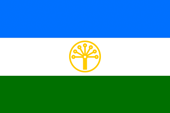 |
Nationalflagge – national flag, |
|
|
|
historische Flaggen – historical Flags: |
|
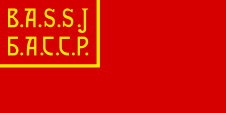 |
1919–1924, Flagge der Autonomen Sowjetrepublik – flag of the autonomous soviet republic, Seitenverhältnis – ratio = 1:2, Quelle/Source nach/by: World Statesmen |
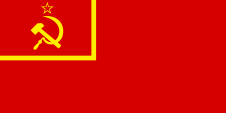 |
1924–1937, Flagge der Autonomen Sowjetrepublik – flag of the autonomous soviet republic, Seitenverhältnis – ratio = 1:2, Quelle/Source nach/by: World Statesmen |
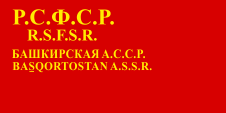 |
1937–1938, Flagge der Autonomen Sowjetrepublik – flag of the autonomous soviet republic, Seitenverhältnis – ratio = 1:2, Quelle/Source nach/by: World Statesmen |
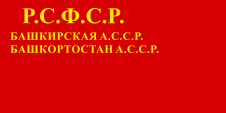 |
1938–1954, Flagge der Autonomen Sowjetrepublik – flag of the autonomous soviet republic, Seitenverhältnis – ratio = 1:2, Quelle/Source nach/by: World Statesmen |
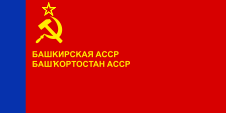 |
1954–1978, Flagge der Autonomen Sowjetrepublik – flag of the autonomous soviet republic, Seitenverhältnis – ratio = 1:2, Quelle/Source nach/by: World Statesmen |
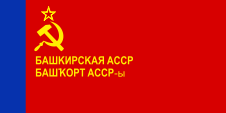 |
1978–1992, Flagge der Autonomen Sowjetrepublik – flag of the autonomous soviet republic, Seitenverhältnis – ratio = 1:2, Quelle/Source nach/by: World Statesmen |
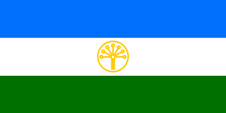 |
1992–2003, Nationalflagge – national flag, Seitenverhältnis – ratio = 1:2, Quelle/Source nach/by: Wikipedia (EN) |
|
siehe auch – look also: Flaggengeschichte der Sowjetrepubliken der UdSSR – flag history of the soviet republics of the USSR |
|
|
|
|
|
|
|
Bedeutung/Ursprung der Flagge – Meaning/Origin of the Flag: |
|
| Die Flagge wurde am 25.02.1992 angenommen, im Format 1:2, am 12.02.2003 wurde das Format auf 2:3 abgeändert. Das alte Format 1:2 geht auf die Flaggen der Sowjetunion zurück. Die bolschewistischen Flaggen waren fast alle im 1:2-Format gehalten, als sichtbarar Bruch mit dem monarchistischen und bürgerlichen 2:3-Format. | The flag was adopted on 25th of February in 1992, in the format-ratio of 1:2, on 12th of February in 2003 the format was changed to 2:3. The old format-ratio of 1:2 goes back to the flags of the Soviet Union. The Bolshevist flags were almost designed in 1:2 format, as a visible break with the monarchist and bourgeois format-ratio of 2:3. |
| Die Flagge zeigt drei waagerechte Streifen in Blau, Weiß und Grün und in der Mitte des weißen Streifens eine goldene Kurai-Blume. Blau steht für die Integrität und Tugend der Baschkiren und ist die Farbe der Turkvölker. Weiß steht für Friedfertigkeit, Offenheit und die Bereitschaft Kompromisse zu schließen. Grün steht für Freiheit und ewiges Leben und ist die Farbe des Islam. Die Kurai-Blume (Salsola Kali) ist ein Symbol für Freundschaft, und ihre sieben Blütenblätter repräsentieren die sieben Stämme als Fundament für Einheit und Stabilität der Baschkiren. | The flag shows three horizontal stripes in blue, white and green and a golden Kurai Flower in the middle of the white stripe.
Blue stands for the integrity and virtue of the Bashkirs and is the colour of the Turkic peoples. White stands for peacefulness, openness and a willingness to compromise. Green stands for freedom and eternal life and is the color of Islam. The Kurai Flower (Salsola Kali) is a symbol of friendship, and its seven petals represent the seven tribes as the foundation for the unity and stability of the Bashkirs. |
| Die Flaggen, die zu Sowjet-Zeiten verwendet wurden, entsprachen alle dem immer gleichen Schema, wie es für Sowjetische Autonome Republiken vorgesehen war: Zwischen 1923 und 1937 oft nur ein einfabiges rotes Flaggentuch mit einer goldenen Inschrift, die den Landesnamen zeigte. Manchmal nur als Abkürzung, manchmal mit vollem Namen, manchmal nur in Russisch oder auch mehrsprachig. Ab etwa 1937 wurden manchmal noch Hammer, Sichel und Stern ergänzt. Ab etwa der Mitte der 50-er Jahre wurden mehrfarbige Flaggen für die Republiken der Sowjetunion eingeführt, deren Strickmuster die untergeordneten Autonomen Sowjetrepubliken zu übernehmen hatten. |
The flags, which were used in the Soviet era corresponded all to the same pattern as it was intended for the Soviet Autonomous Republics:
Between 1923 and 1937 frequently only a single-coloured red bunting with a golden inscription, showing the name of the country. Sometimes only as a shortcut, sometimes the full name, sometimes only in Russian or even multilingual. From about 1937 hammer, sickle and star were sometimes added. From about the mid-50s multicolored flags were introduced for the republics of the Soviet Union, whose knitting patterns had to be taken over by the subordinated autonomous Soviet republics. |
| Quelle/Source nach/by: Wikipedia (EN), Flaggen Enzyklopädie, Volker Preuß | |
|
|
|
Wappen – Coat of Arms: |
|
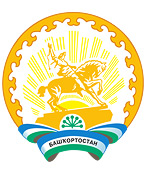 |
Wappen der Republik Baschkortostan – coat of arms of the Republic of Bashkortostan, Quelle/Source: Russiatrek |
|
|
|
Landkarten – Maps: |
geographische Lage in Russland – geographical position within Russia: |
Landkarte des Landes – map of the country: |
|
|
Zahlen und Fakten – Numbers and Facts: |
|
|
|
|
|
|
|
|
|
|
|
|
|
|
|
|
|
|
|
|
|
|
|
Geschichte: |
|
Altsteinzeit
· erste Besiedlung 9. Jahrhundert · erste Erwähnung der Baschkiren 10. Jahrhundert · beginnende Islamisierung 13. Jahrhundert · zum Reich der Goldenen Horde 14. Jahrhundert · der Islam wird dominierende Religion 15. Jhd. bis 1552 · unter der Herrschaft der Khanate Kasan und Sibir 1552 · Eroberung durch Russland 1865 · Gründung des Gouvernements Ufa 1919 · Errichtung der Sowjetdiktatur, Gründung der Baschkirischen Autonomen Sowjetrepublik 1990 · Erklärung der staatlichen Souveränität 31.12.1991 · die Sowjetunion löst sich auf, die Verfassung der Russischen Sozialistischen Föderativen Sowjetrepublik (RSFSR, Russland), ein ehemaliger Teilstaat der Sowjetunion bleibt vorerst in Kraft 1992 · Umbenennung in Republik Bashkortostan 25.12.1993 · eine neue Verfassung für Russland (Russische Föderation) tritt in Kraft, das Verhältnis zu den Gliedern der Föderation wird damit neu geregelt |
|
|
History: |
|
Paleolith
· first settlement 9th century · first mention of the Bashkirs 10th century · start of islamization 13th century · to Empire of the Golden Horde 14th century · Islam becomes the dominant religion 15th century to 1552 · under the rule of the Khanates of Kasan and Sibir 1552 · conquest by Russia 1865 · establish of the Gouvernement of Ufa 1919 · establish of the Soviet dictatorship, foundation of the Bashkirian Autonomous Soviet Republic 1990 · state sovereignty declaration 31st of December in 1991 · the Soviet Union dissolves, the constitution of the Russian Socialist Federative Soviet Republic (RSFSR, Russia), a former substate of the Soviet Union, remains in force for the time being 1992 · rename to Republic of Bashkortostan 25th of December in 1993 · a new constitution for Russia (Russian Federation) comes into force, and the relationships with the members of the federation is re-regulated in this way |
| Quelle/Source: Atlas zur Geschichte, World Statesmen, Russiatrek, Die Völker der Erde |
|
|
Ursprung des Landesnamens – Origin of the Country's Name: |
|
| Der Name "Baschkirien" oder "Baschkortostan" verweist auf das hier lebende Volk, die Baschkiren, die sich selbst als Baschkurt bezeichnen. | The name
"Bashkortostan" or "Bashkiria" refers to the people living here, the
Bashkir, describing themselves as Baschkurt. |
| Quelle/Source: Die Völker der Erde | |
|
|
|